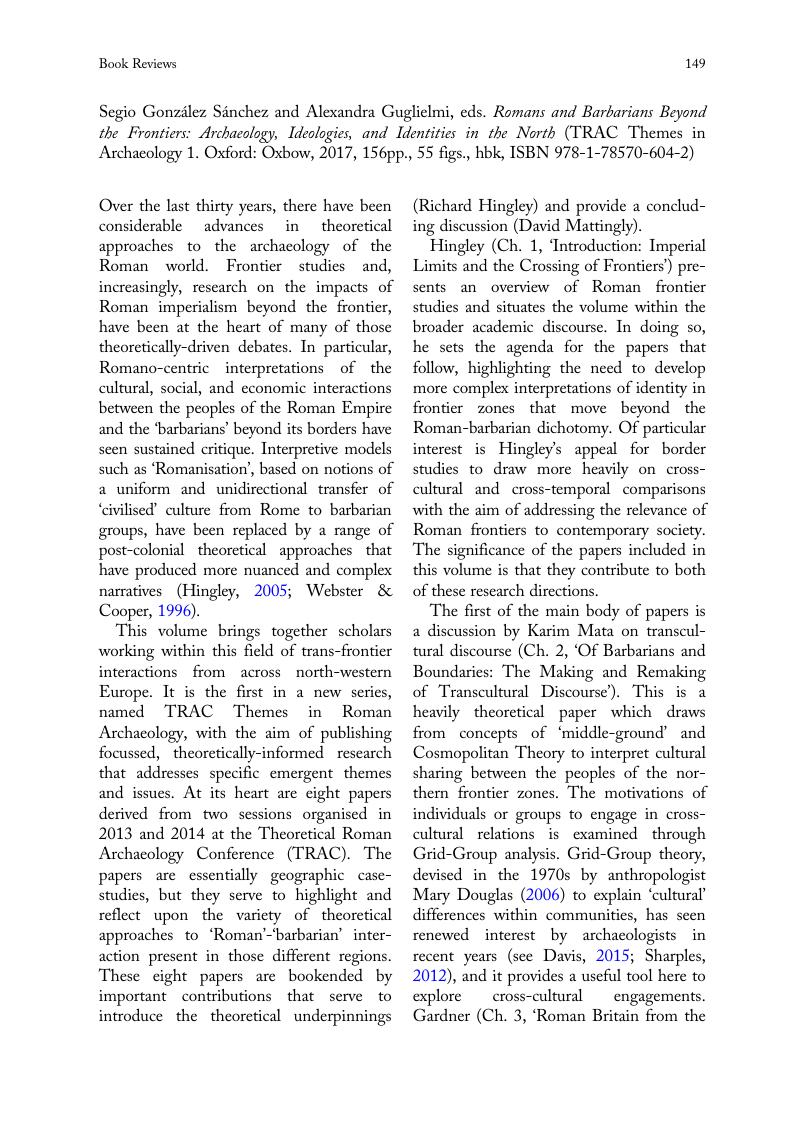No CrossRef data available.
Article contents
Segio González Sánchez and Alexandra Guglielmi, eds. Romans and Barbarians Beyond the Frontiers: Archaeology, Ideologies, and Identities in the North (TRAC Themes in Archaeology 1. Oxford: Oxbow, 2017, 156pp., 55 figs., hbk, ISBN 978-1-78570-604-2)
Published online by Cambridge University Press: 30 January 2020
Abstract
An abstract is not available for this content so a preview has been provided. Please use the Get access link above for information on how to access this content.

- Type
- Book Review
- Information
- Copyright
- Copyright © European Association of Archaeologists 2020
References
Davis, O.P. 2015. From Football Stadium to Iron Age Hillfort: Creating a Taxonomy of Wessex Hillfort Communities. Archaeological Dialogues 22(1): 45–64.CrossRefGoogle Scholar
Douglas, M. 2006. A History of Grid and Group Cultural Theory. Semiotics Institute Online [accessed 16 October 2019]. Available at: <http://projects.chass.utoronto.ca/semiotics/cyber/douglas1.pdf>>Google Scholar
Hingley, R. 2005. Globalizing Roman Culture: Unity, Diversity, and Empire. London: Routledge.CrossRefGoogle Scholar
Sharples, N. 2012. Boundaries, Status, and Conflict: An Exploration of Iron Age Research in the Twentieth Century. In: Moore, T. and Armada, X., eds. Atlantic Europe in the First Millennium bc: Crossing the Divide. Oxford: Oxford University Press, pp. 668–82.CrossRefGoogle Scholar
Webster, J. & Cooper, N.J., eds. 1996. Roman Imperialism: Post-Colonial Perspectives (Leicester Archaeology Monographs 3). Leicester: University of Leicester.Google Scholar




